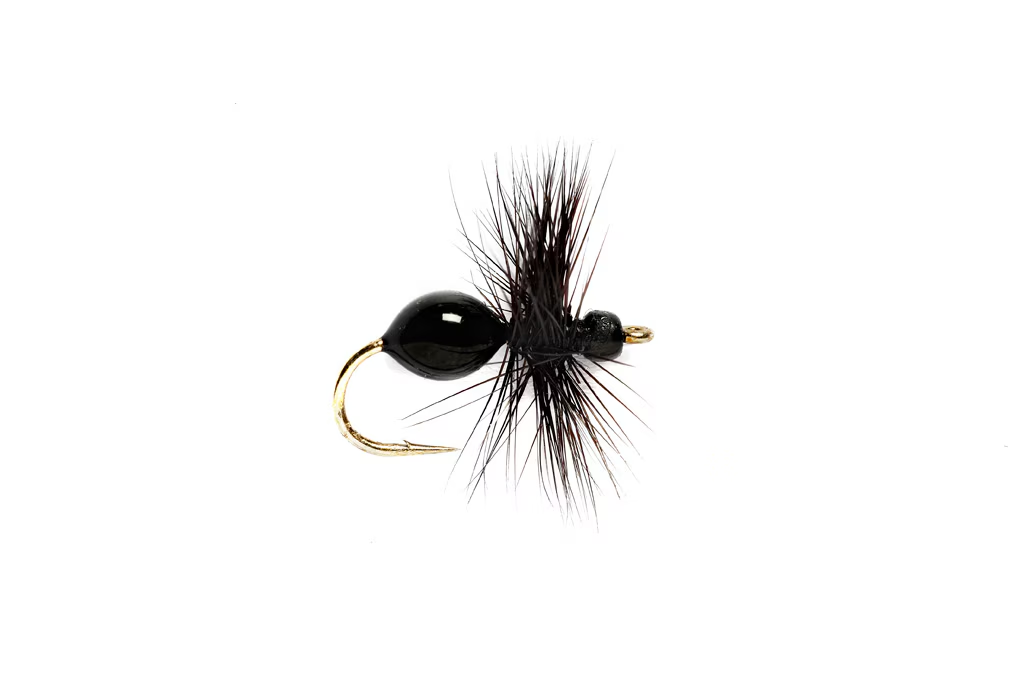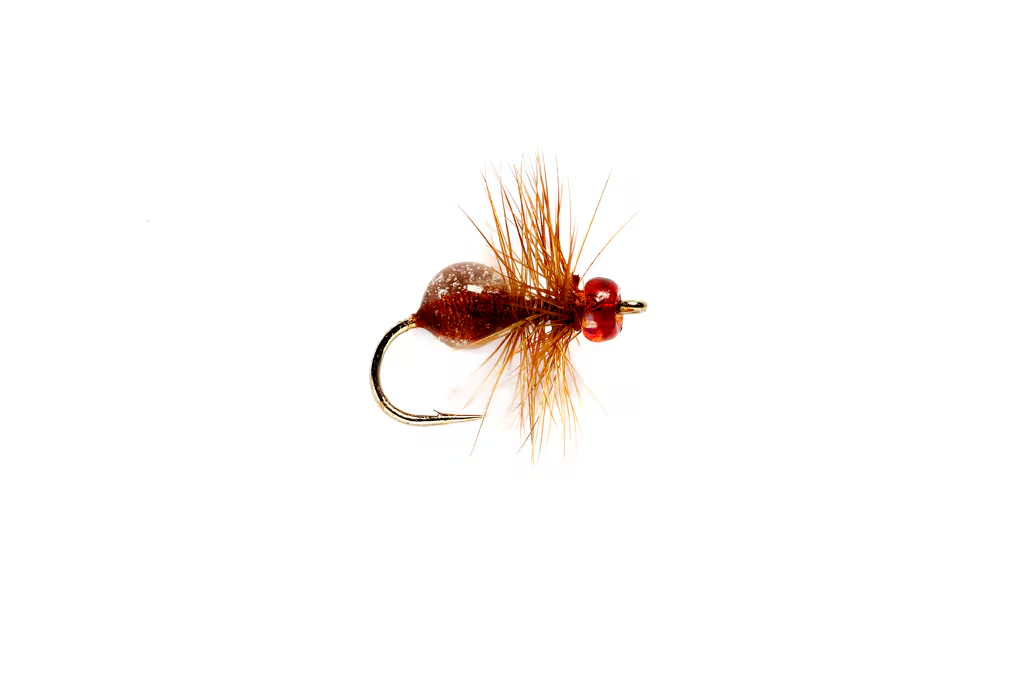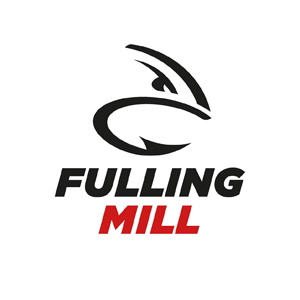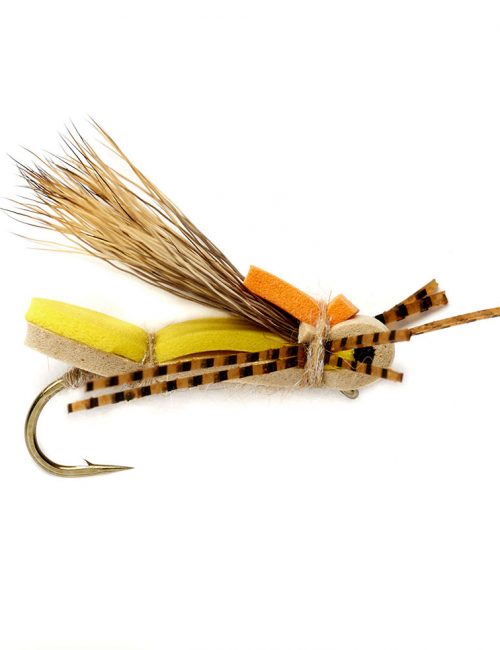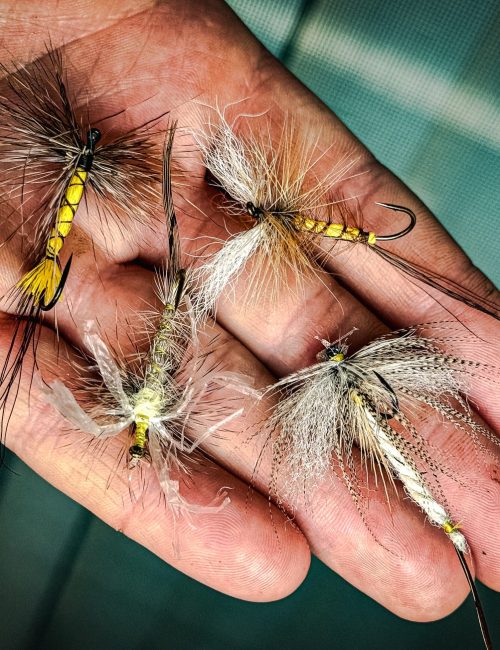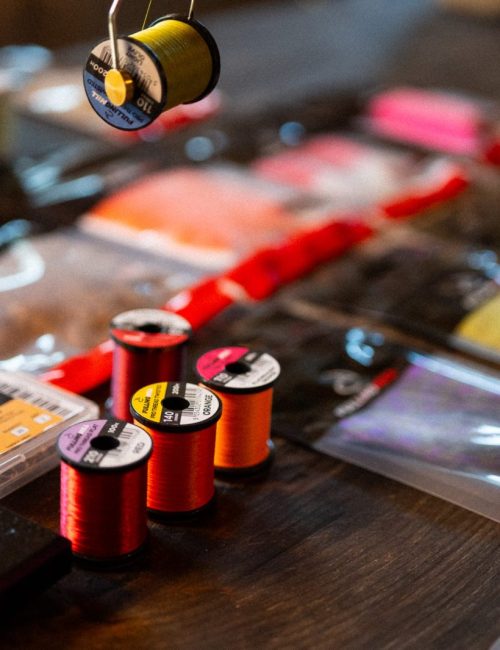Tackling Terrestrials: Fishing Hoppers, Beetles, and Ants
Published: 12th September 2025 | Author: Fulling Mill
Introduction to Fishing Terrestrials
At this point in the season, we hope you’ve found time to get on the water and fish terrestrials. Often called terrestrial season, summertime offers great opportunities to use a variety of patterns that imitate hoppers, beetles, ants, and other land-based insects. For many anglers, this is the best time of year. Not only does fishing terrestrials bring exciting strikes on buoyant dry flies, but it also allows anglers to relax and enjoy the act of prospecting with a dry fly. We encourage you to join in the terrestrial fun. If you’re unsure where to start, this article provides helpful guidelines that will better prepare you for those moments when fish eagerly take terrestrial flies off the surface. Need some flies? Check out our wide range of terrestrial flies on our website or at a Fulling Mill dealer near you.
When, Where, & Why Terrestrial Fishing
During the summer months, the banks of rivers and streams explode with terrestrial life making for some excellent fishing opportunities. After fishing nymphs and chasing mayfly, stonefly and caddis hatches through spring, summer’s terrestrial fishing breathes life into anglers. Fishing terrestrial patterns imitating grasshopper, beetles and ants brings some of the most exciting dry fly eats of the season. Whether you’re fishing from the bank on a low-lying spring creek, boulder hopping up a mountain stream, or drifting a wide river, tie on a terrestrial and fish it with confidence through summer. In this article, we’ll highlight some of the most common terrestrials to imitate when fly fishing for trout, some popular patterns.



Fishing Terrestrials
This category of insects are land dwellers that similar to aquatic insects, go through nymph and larval stages before morphing into their adult form. As the trees leaf out and grasses grow knee high, you can be sure to find all sorts of terrestrial insects that go way beyond the popular three bugs we’ll discus in this article: grasshoppers, beetles and ants. The list of terrestrials also includes a range of aphids, spiders and cicadas, but we’ll save the deep dive on those insects for future blog postings.
Fishing a terrestrial pattern lends itself nicely for covering water and prospecting with a dry fly. Often a hopper, beetle or ant will turn heads that you may not have seen otherwise if you were strictly looking for a rising fish. Dry fly fishing doesn’t always have to be a methodical stalk. When fishing terrestrials, prospect water you might not normally attempt a drift through. Get risky with it, for reward could be near!
With a visible, buoyant fly and generally heavier tippets that what might be expected smaller dry flies, cast your terrestrial near structure or let it drift under brush. Fish it in inches of water and aim for tight to the bank. Splat your fly hard in the eddy, let it ride through the foam. Skate and skitter the bug, and watch it get slurped! These are the situations and takes we live for when fishing terrestrial dries.
It’s A Bug’s World

When fishing terrestrials, it’s important to be near habitat that supports terrestrial insects. Here, we look to the edges, and not all banks are created equal. Some riverbanks are thick with brush, and often this is where the best terrestrial fishing is done. Locating shade is not only a sure way to find brush, but it’s in these leafy areas that terrestrial insects are generally most prevalent. When it comes to grasshoppers though, they prefer open grasslands which usually is not always accompanied with shade trees. In this scenario, tie on a hopper that floats well and is visible to you and get to fishing.
As you approach the river or stream you’ll be fishing, take note of the bugs you see on your walk in. If you’re breaking trail through a field, you may find grasshoppers clinging to grasses, springing into the air, or in the case of some hopper species, taking flight for a short distance before landing clumsily to the ground again. Perhaps you’re hiking through a thick, brushy area. Pay close attention and look for where vegetation has been chewed down by beetles, caterpillars, and other terrestrial insects. If it’s a hot, humid late-summer’s day, perhaps you notice clouds of flying ants in the sky and wonder if they’re also on the water. Chances are, all of the insect life mentioned above finds its way in the water at some point throughout the season. And yes, trout and other fish do take notice!
Terrestrial Flies
Here are some of our top-selling and most trusted hopper, beetle, and ant patterns by category. Then, take a look at your fly box and stocking up on some new patterns. Check out our website, or head to your local Fulling Mill dealer and fly shop for more!
Hoppers & Crickets

A tan grasshopper sits still for the photograph.


Grasshoppers thrive throughout the warms summer months feeding on a range of plant life. While they are preyed upon by variety of birds and land animals, trout love them too. If you listen on a warm summers day you’ll hear these bugs singing their songs. These relatively big-bodied, leggy terrestrial insects are undeniably eye catching to a trout that lays awaiting food in the drift. Hoppers are most likely to be found hitting the water when clumsily jumping or flying near the grass edges of the riverbank. Occasionally, events such as the haying of fields, or harvest of crops can push bugs like hoppers towards field edges. For the streams in the immediate area, trout can be found gorging on these tasty morsels.
We love fishing hoppers because they are generally easy to tie on, visible and buoyant all day long, and incredibly fun to fish. Plus, let’s face it. Tying on a big dry fly can be a really nice change of pace from the usual hassle of smaller dry flies. Check out some of our most popular hopper imitations below!




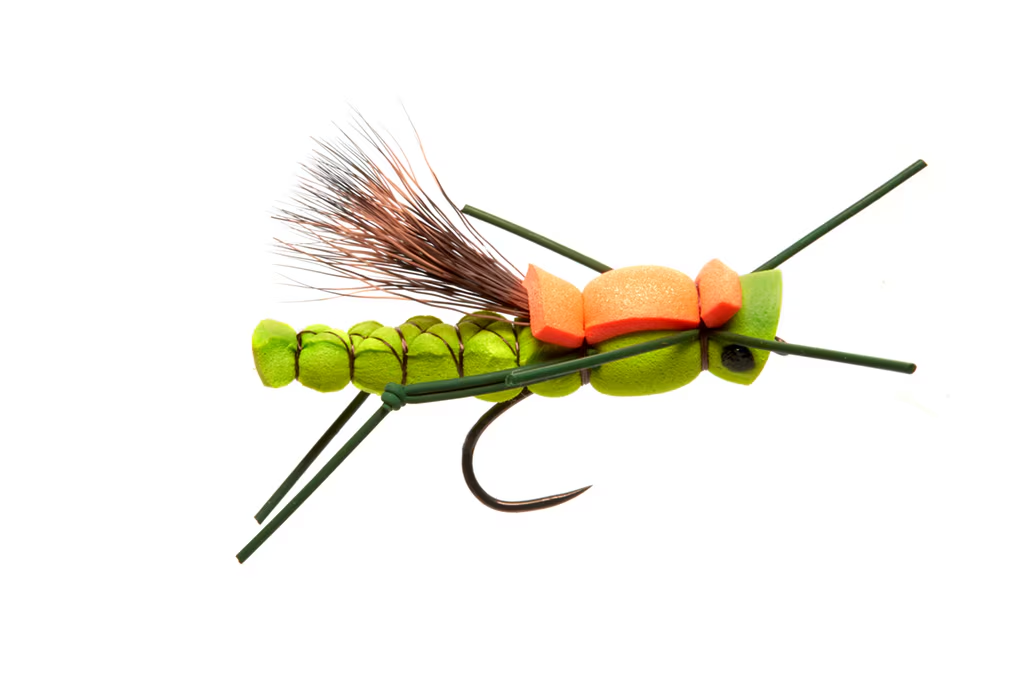




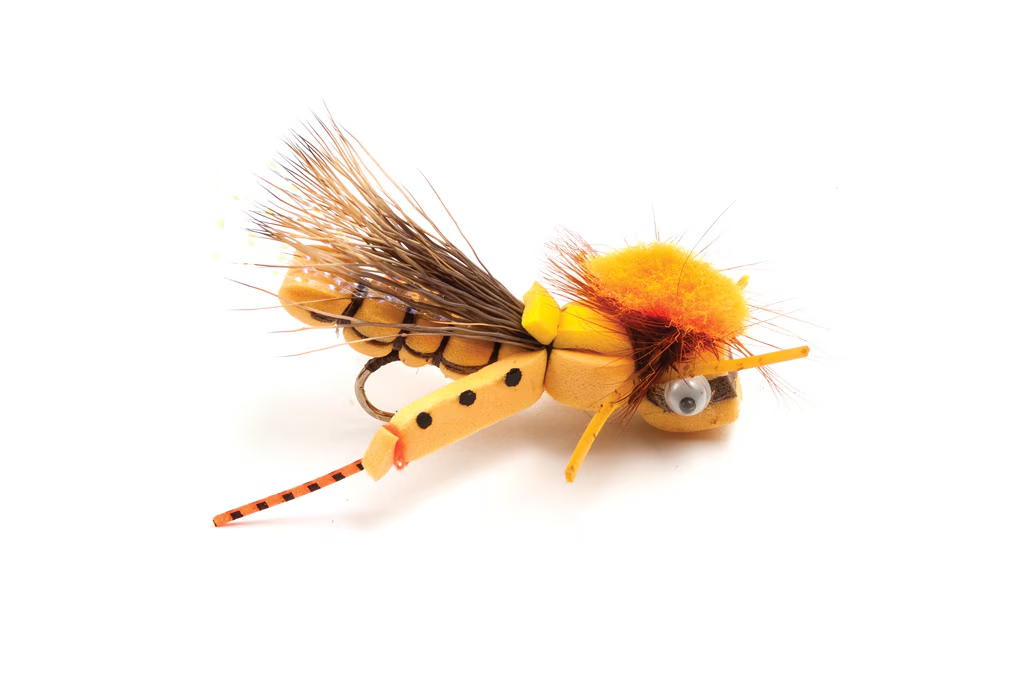

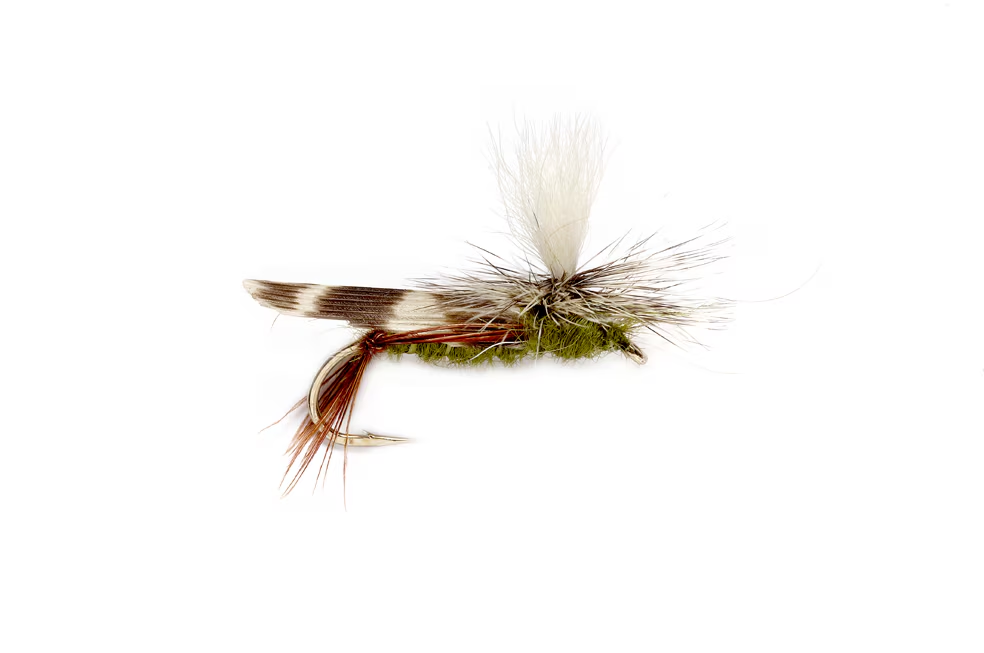



Hopper Dropper
While fishing a single hopper dry fly is a popular technique when the fish are keyed in on big bugs, fishing grasshopper patterns have been largely popularized by fishing the tandem fly rig known as hopper dropper. As the name implies, the buoyant hopper fly supports a nymph dropped below. This gives fish two fly options. The hopper acts as an effective strike indicator on the nymph, and is much nicer to overhead cast than a traditional bobber/indicator. Not sure what hopper dropper flies to pair together? Check out Sean Platt’s Top Hopper Dropper Combos.
Depending on what which fly presentation you’re most confident in (hopper or dropper), base your fly pairing on one another. Consider the nymph’s weight, the dry fly’s air resistance and buoyancy, its visibility, and the length of tippet between the dry and the nymph. Be sure to treat your hopper dry properly so you can optimize its buoyancy to support the nymph and offer valuable strike detection.

Crickets…
Most people have a hopper fly in their fly box, but how about crickets? While hoppers often get the press, don’t overlook the effectiveness of fishing a cricket imitation. Additionally, these smaller-bodied bugs are a snack for trout, and their dark coloration often means the fish see them easily. Try running a cricket dry fly when the water is a bit off color. You’re sure to get some looks, and with hope, takes!
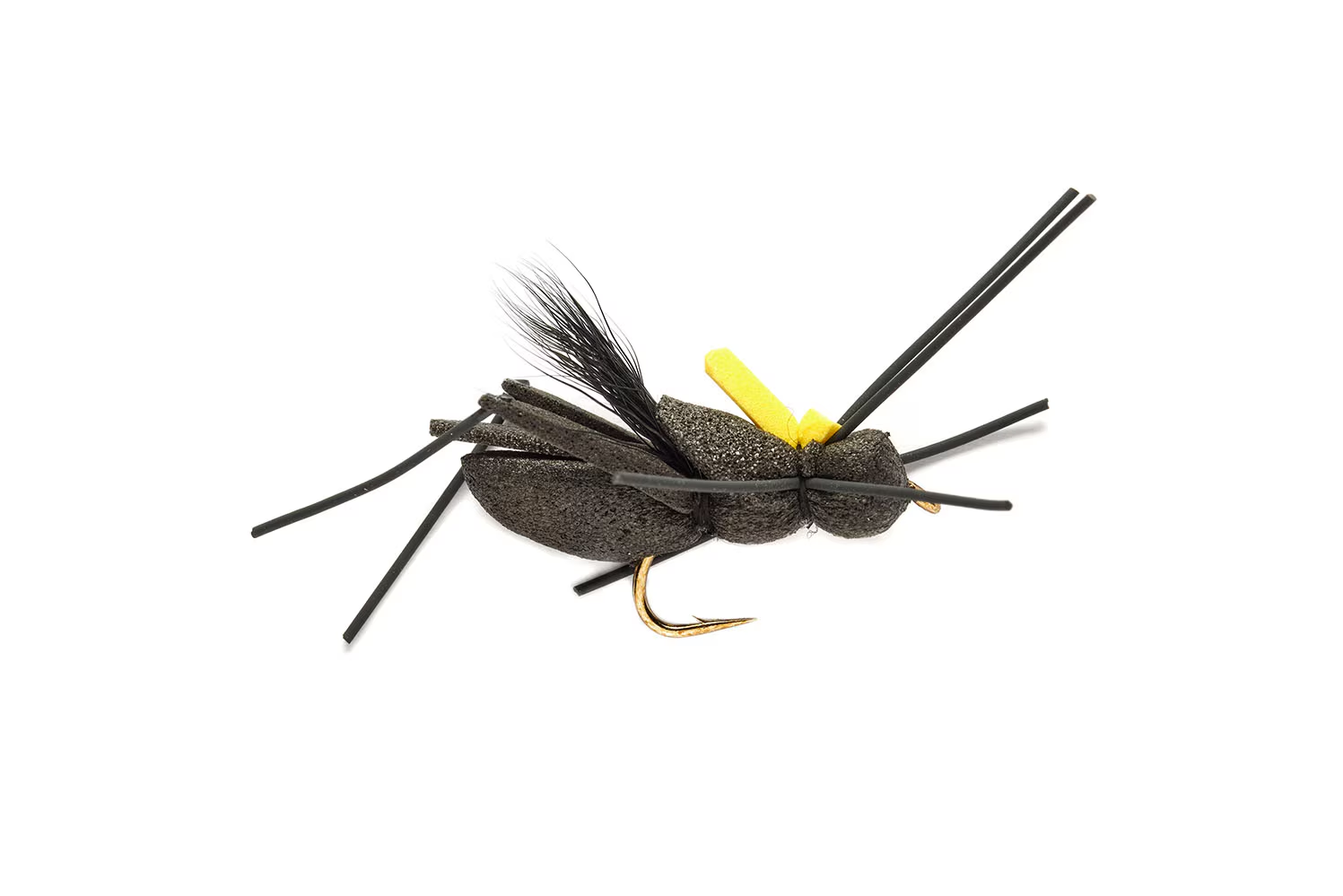

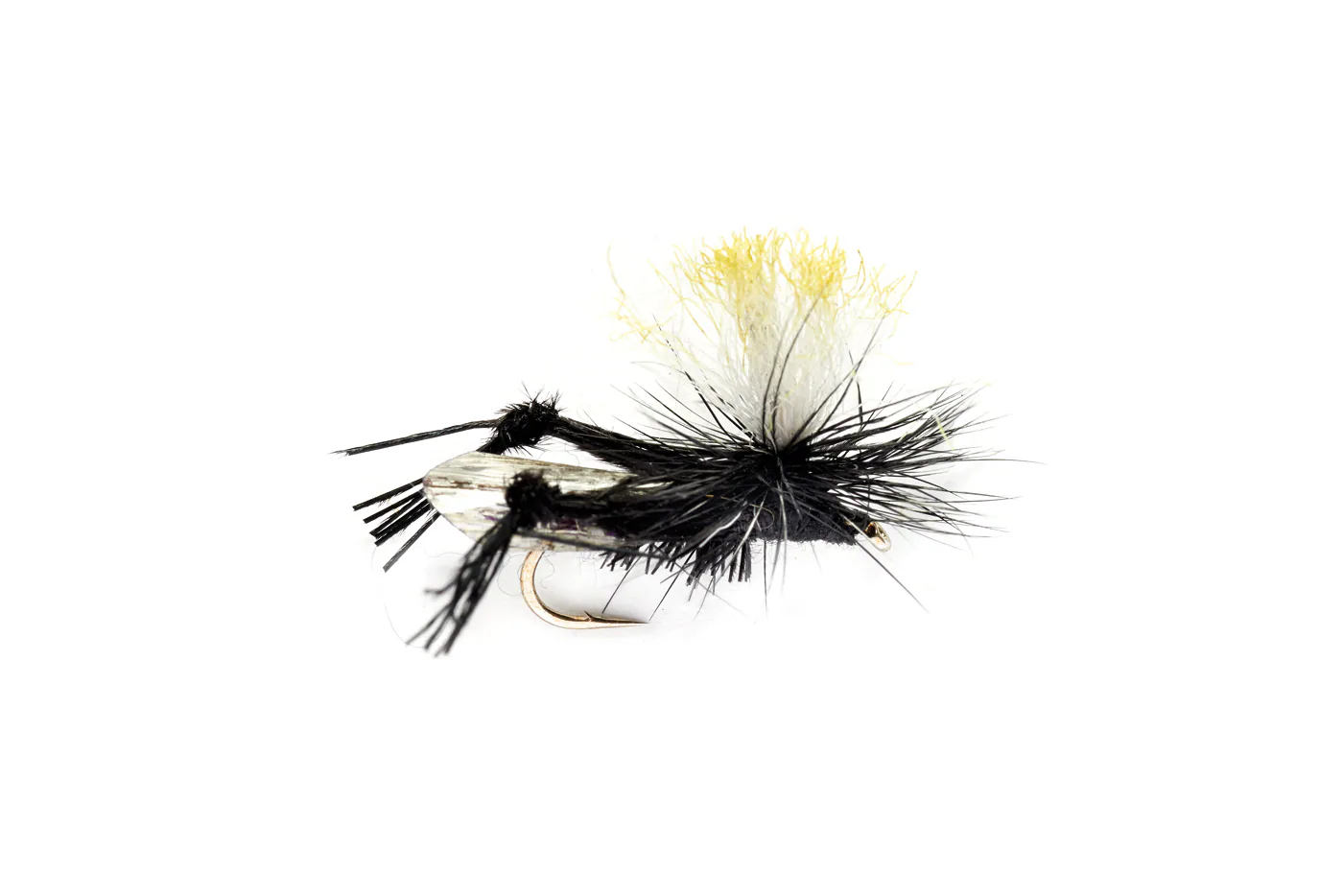
Beetles
Although often overlooked in the terrestrial conversation, beetles are an important food source for trout. These smaller terrestrial insects come in a range of shapes, shades, and sizes. However, fishing a black beetle pattern with a bit of iridescence is generally a safe bet. Trout love beetles, and their more approachable shape and size are often well received.





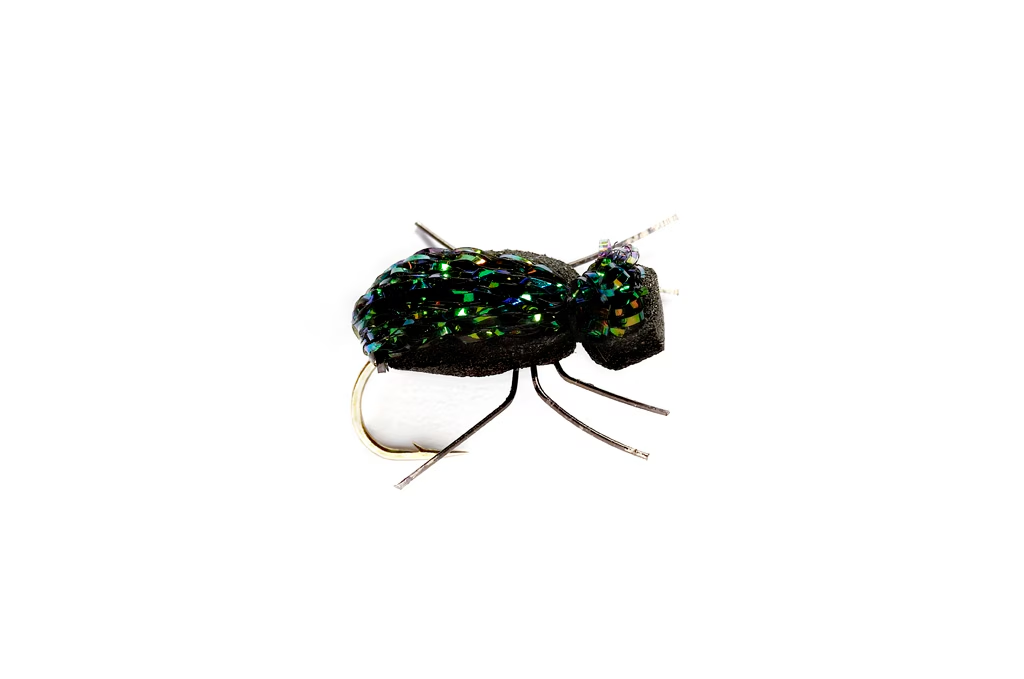

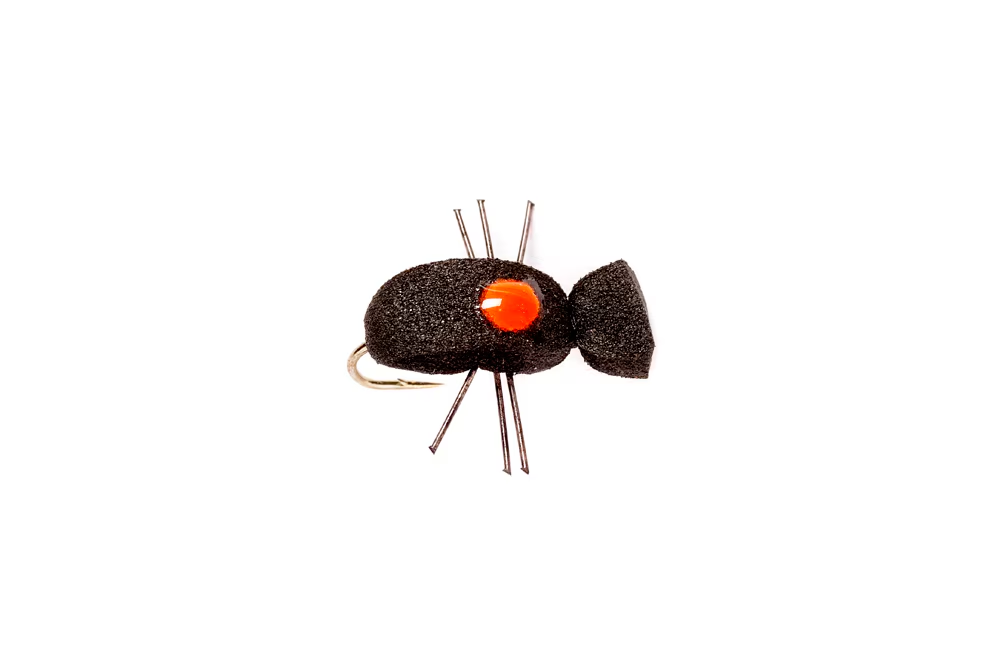


Flying or Sunken, Trout Love Ants!
Flying ants can populate the skies above rivers throughout late summer and into early fall. In fact, this is arguably the most prolific terrestrial hatch of them all. That said, you won’t see these bugs flying every day, as their hatch timing is specifically tied to humidity and temperature. That said, when they’re out, they’re very visible. Flying ants come from the ground and fly around to find mates before distributing themselves to start new ant colonies. When ants end up on the water, fish of all varieties take advantage. Everything from trout to smallmouth can be found feeding on ants, and some epic fishing can be had. Even the largest fish in the system take notice.
Flying ants don’t choose to land in the water, but during a hatch near water, the sheer number of ants almost guarantees that some will end up on the surface by accident. These bugs are easily knocked down to the water’s surface when a gust of wind comes through or a sudden rain cell passes through, forcing these bugs to the water or ground beneath them. Most flying ants are pretty small, but the occasional queen ant might present a couple of sizes larger than the larger number of smaller-bodied males.
Since the best flying ant hatches are sporadic and hard to predict, you simply need to be on the water often during late summer to hit the best hatches. That said, if you’re lucky enough to live near water, simply take a look outside for any sign of flying ants in the afternoons. If you see these terrestrial insects buzzing around in the warm afternoon sunshine, you’d better get to the water and start fishing!

Flying Ant Dries
These small flies are about as tiny as terrestrial fishing gets and you need to be able to track the fly throughout its drift. Whether you fish a white tipped ant body pattern like the Quick Sight Ant, or choose a Para Ant, choosing a visible pattern is key for you success.
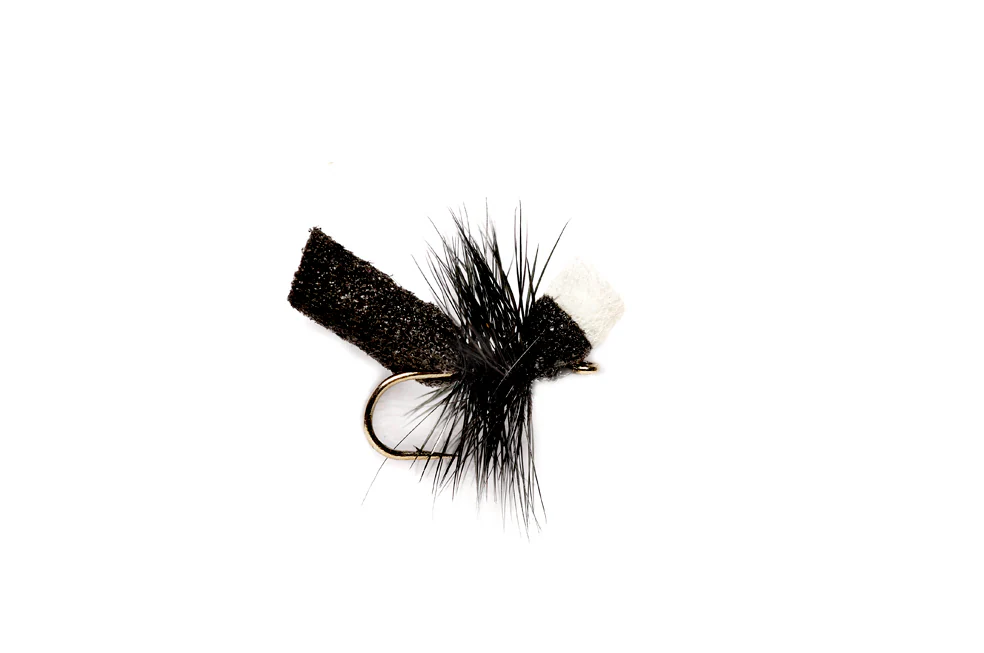


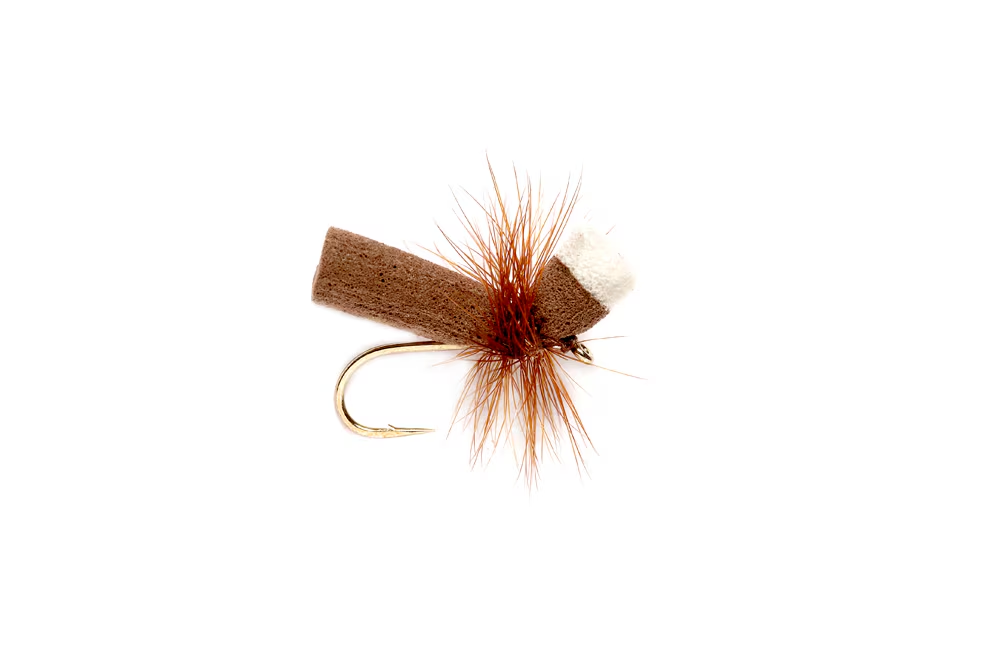


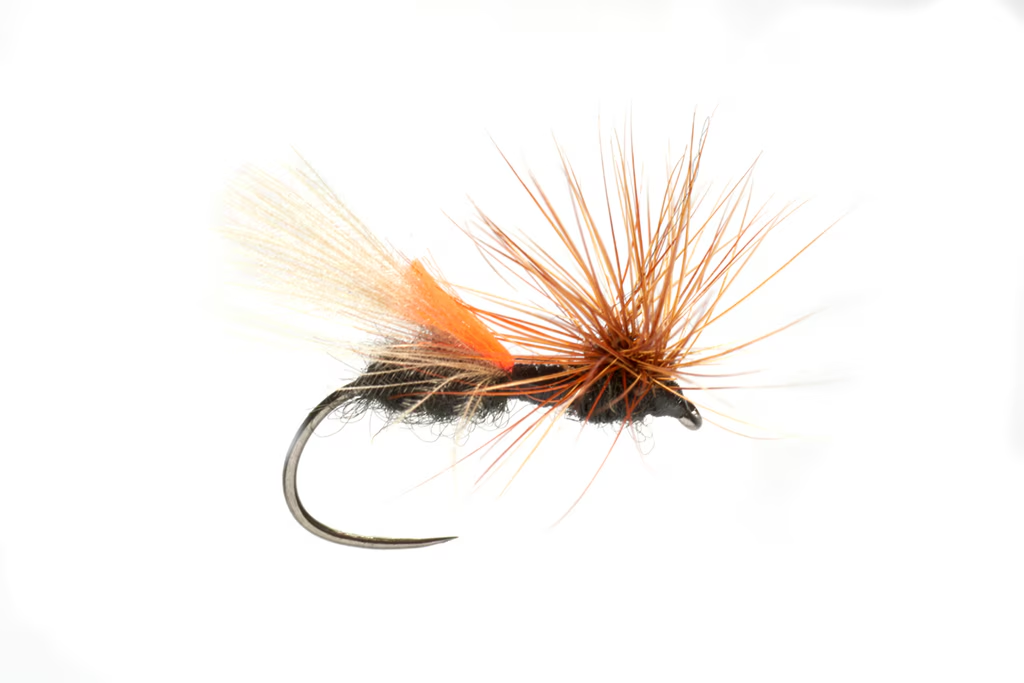
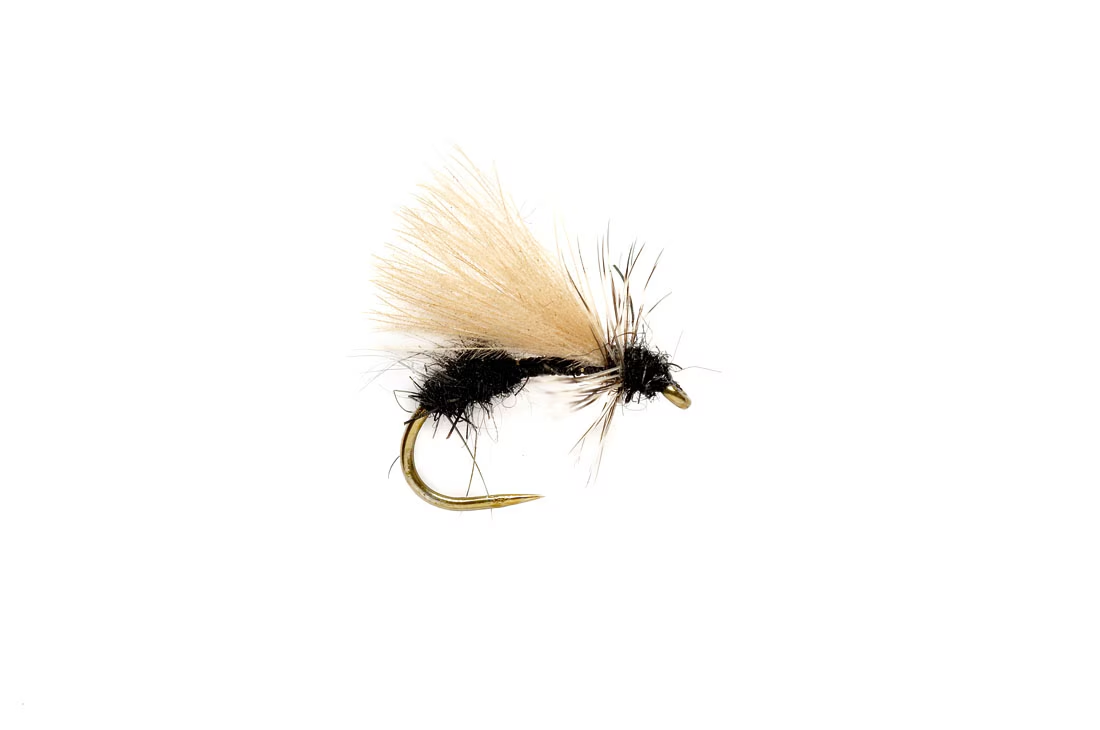




Sunken Ants
Fishing a sunken ant pattern is an effective tactic through summer and having a couple patterns that get below the waters meniscus can make or break your fishing somedays. While trout are often eager to take terrestrials off the surface, sometimes a fly below the surface simply outperforms the dry fly. Perhaps the sunken fly signals vulnerability, or perhaps the trout have to move that much less to eat it, in which case they do. When fishing a sunk pattern, rarely do you need to fish it deep. Often just below the surface the trout will take your fly. For strike detection, try fishing a sunken ant fly as a dropper, using a visible and buoyant dry fly to support the dropper and for strike indication.
Generalist Patterns & Other Terrestrials
When fishing terrestrials, you don’t always need an exact hatch match. There are a number of effective patterns that simply suggest terrestrial food for trout. We call these generalist patterns or attractor patterns, and they’re designed to imitate a range of bugs. There’s a time and place for these, but every angler should have a few suggestive terrestrials in their box.
Procter’s All Purpose Terrestrial
Signature Tyer Paul Procter is an expert dry fly angler in the UK and has developed some great fly patterns that imitate a range of terrestrial life. Notably, his all-purpose terrestrial in both CDC variant and “target” form, are brilliant patterns to have in your box. Not only are these patterns effective in the UK, but we promise you that they work great in other waters too. You can watch Paul fish these flies and more in the film Wild Brown Trout on the Fly: A Summer Fly Fishing Masterclass with Paul Procter.




Rosenbauer’s General T
Tom designed the General T to be his go-to terrestrial pattern when a more subtle approach is necessary to fool wary trout. The General T lands softer on the water than most hopper or beetle patterns and effectively imitates a wide range of terrestrials. The pattern sits lower in the surface film than any foam fly, and its flashy wing catches the light and enhances its visibility to both fish and the angler.



Fly Fish Food Generalist Terrestrials
The following patterns were developed by Fulling Mill Signature Tyers at Fly Fish Food. If you haven’t heard of the guys and FFF, where have you been? Often characterized by the strategic use of foam and rubber legs, these patterns have been developed over many years and tested on waters all over the US and beyond.
Signature Tyer Clark “Cheech” Pierce’s Stoneflopper passes as a hopper or even stonefly. This terrestrial can be fished with confidence throughout the summer and even into early fall.


Signature Tyer Curtis Fry developed the Moodah Poodah and Mega Moodah which are simply buggy and suggestive of terrestrial insects. Great flies to fish in dry dropper set up and not only offer visibility, but great buoyancy as well. Learn more about the Moodah Poodah and tie some up yourself!
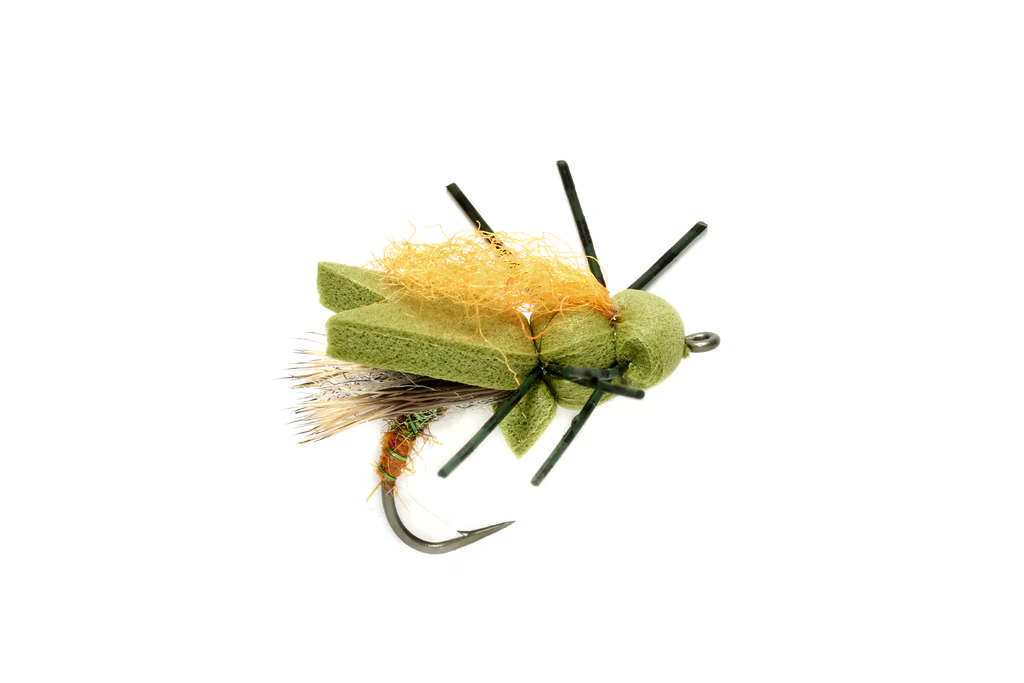





The Winding Down of Terrestrial Season
Like all seasons, the terrestrial season also has to come to an end. As temperatures fall and the landscape is covered in its first frost, the best terrestrial fishing is left in the past. That said, you can still catch fish on hopper, beetle, and ant patterns into fall! After weeks of reliably fishing foam flies and terrestrial patterns, it can be hard to put them down. No matter when your terrestrial season ends, if you spent time fishing hoppers, beetles, or ants, you likely made some great memories to carry you through the off-season. With tying season just around the corner, it’s a perfect time to stock up on terrestrials for next year.

Tying Terrestrials


Do you enjoy tying your own flies? If so, we sell just about all the materials you need to tie some terrestrials. Additionally, take a look at the material list below for some inspiration for the tying season ahead!
The Foundation: NEW Fulling Mill Pro Thread & Hooks
Every good fly starts with the hook and thread. We launched an all-new Pro Thread line that we are incredibly proud of. Premium thread spooled to perfection and available in a vibrant array of colors to fit all your tying needs. Twisted & flat options in 70, 110, 140, 210 denier, and 340 denier floss. Offered in single spools or convenient 12 packs. Ideal for whatever pattern you’re tying next.


Every good fly starts with the hook. We developed a purpose built terrestrial hook that lives up to the name. This hook comes in size 6-12, effectively covering your big bug terrestrial needs.
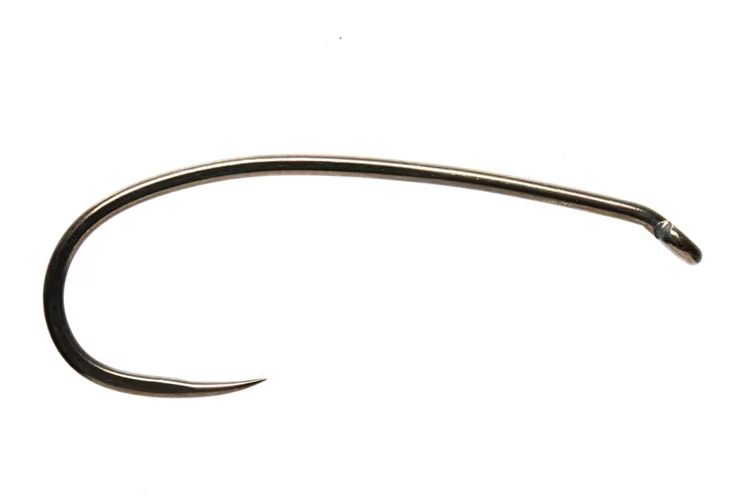
Dubbing
With tons of both purpose built and all-rounder dubbings to choose from, we’ll let you do the choosing!
Bug Foam
Offered in 1mm, 2mm, & 3mm, our foam is premium stuff. With a range of colors to choose from, Bug Foam is a staple material for any terrestrial fly tyer.

Foam Cylinders and Ant Bodies
Cylindrical foam can be a fun material to work with and incorporate into your terrestrial patterns. Offered in a range of colors in both hard foam and soft foam options, give it a try this season!


Ultra Dry Yarn & Parapost Yarn
Ideal for adding buoyancy and visibility to your dry flies, both products have their own place on our fly tying desks. Ultra Dry yarn is a hollow fibre construction, high floating yarn, treated with our Ultra-Dry treatment process to give unparalleled buoyancy. Parapost Yarn, is a straight-fibred, waterproofed yarn that is perfect to use when making parachute posts, loop wings, emergers, and split-wing dry flies. 20m of yarn per pack, cut into strips of 40cm, which is then secured to a backing card for perfect presentation.


NEW Silicone Legs
We are excited to launch a new range of rubber legs that come in a variety of colors and styles to suit your tying needs. However you intend to use our silicone legs, we’re certain there’s a style that will excite you. We offer Glitter Legs, Scale Legs, Barred Legs, Splash Legs, and more!



Streamer Straggle Micro
Ideal for building attention grabbing bodies on terrestrial patterns, nymphs, jig streamers, and more! Easy to use and handle and adds durability to your flies.

Premium CDC & CDC Dubbing
Ideal for building wings on ant patterns or simply adding some movement to any fly, we offer a wide range of CDC in a variety of colors, 1 gram & 3 gram packs, as well as our new CDC Dubbing.
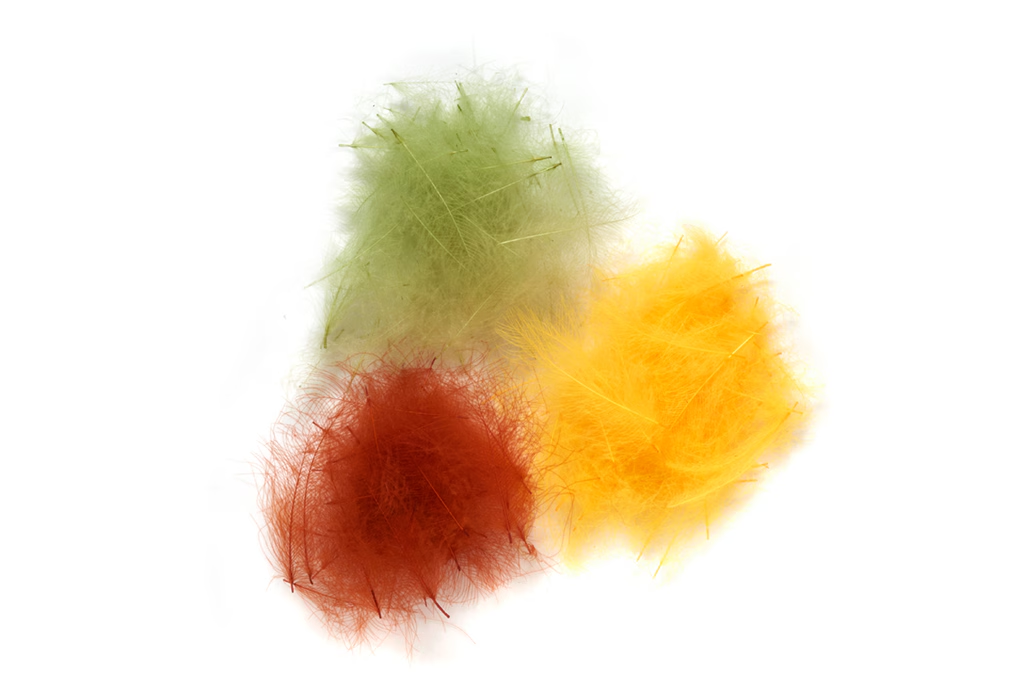

Deer Belly
Deer hair is a versatile material that can be incorporated into almost any fly pattern. If you’re looking to tie some cricket or hopper patterns with a natural material, look no further than our Deer Belly.

Premium Selected Peacock Herl
Long fibre, high quality Peacock herl offered in 3 colors. A classic fly tying material with a multitude of uses. Try using this material for terrestrial bodies like ant and beetle patterns.

Fly Boxes for Storing Terrestrial Flies
Whether you need a big box for your backpack or boat, a box for the back pocket or vest, or an ultra-light solution for fly storage, we’ve got you covered. Made proudly in the UK, our boxes use top-tier quality materials that make for exceptional durability and security. Not only are they designed with quality components, but they look sharp, too!





